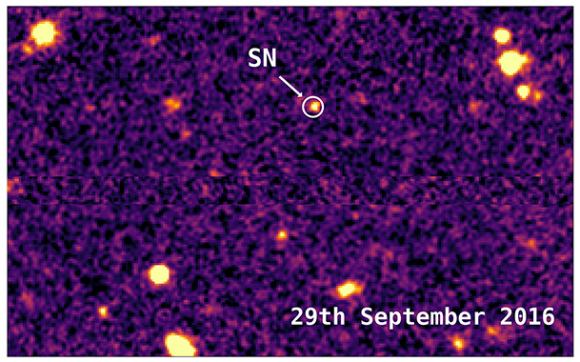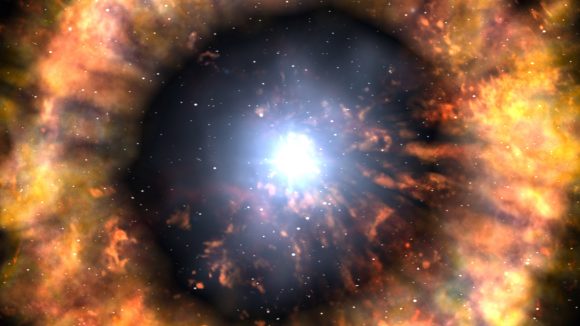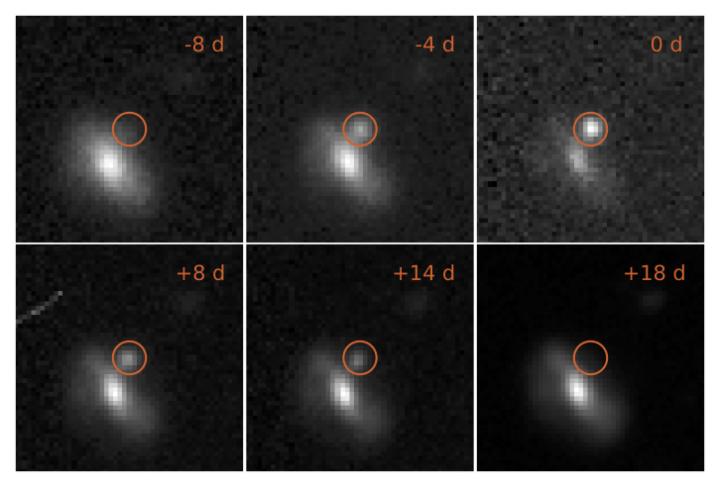A supernova is one of the most impressive natural phenomena in the Universe. Unfortunately, such events are often brief and transient, temporarily becoming as bright as an entire galaxy and then fading away. But given what these bright explosions – which occur when a star reaches the end of its life cycle – can teach us about the Universe, scientists are naturally very interested in studying them.
Using data from the Dark Energy Survey Supernova (DES-SN) program, a team of astronomers recently detected 72 supernovae, the largest number of events discovered to date. These supernovae were not only very bright, but also very brief – a finding which the team is still struggling to explain. The results of their study were presented on Tuesday, April 3rd, at the European Week of Astronomy and Space Science in Liverpool.
The team was led by Miika Pursiainen, a PhD researcher from the University of Southampton. For the sake of their study, the team relied on data from the 4-meter telescope at the Cerro Tololo Inter-American Observatory (CTIO). This telescope is part of the Dark Energy Survey, a global effort to map hundreds of millions of galaxies and thousands of supernovae in to find patterns int he cosmic structure that will reveal the nature of dark energy.

As Pursiainen commented in a recent Southampton news release:
“The DES-SN survey is there to help us understand dark energy, itself entirely unexplained. That survey then also reveals many more unexplained transients than seen before. If nothing else, our work confirms that astrophysics and cosmology are still sciences with a lot of unanswered questions!”
As noted, these events were very peculiar in that they had a similar maximum brightness compared to different types of supernove, they were visible for far less time. Whereas supernova typically last for several months or more, these transient supernovae were visible for about a week to a month. The events also appeared to be very hot, with temperatures ranging from 10,000 to 30,000 °C (18,000 to 54,000 °F).
They also vary considerably in size, ranging from being several times the distance between the Earth and the Sun – 150 million km, 93 million mi (or 1 AU) – to hundreds of times. However, they also appear to be expanding and cooling over time, which is what is expected from an event like a supernova. Because of this, there is much debate about the origin of these transient supernovae.

A possible explanation is that these stars shed a lot of material before they exploded, and that this could have shrouded them in matter. This material may then have been heated by the supernovae themselves, causing it to rise to very high temperatures. This would mean that in these cases, the team was seeing the hot clouds rather than the exploding stars themselves.
This certainly would explain the observations made by Pursiainen and his team, though a lot more data will be needed to confirm this. In the future, the team hopes to examine more transients and see how often they occur compared to more common supernovae. The study of this powerful and mysterious phenomenon will also benefit from the use of next-generation telescopes.
When the James Webb Space Telescope is deployed in 2020, it will study the most distant supernovae in the Universe. This information, as well as studies performed by ground-based observatories, is expected to not only shed light on the life cycle of stars and dark energy, but also on the formation of black holes and gravitational waves.
Further Reading: University of Southampton

